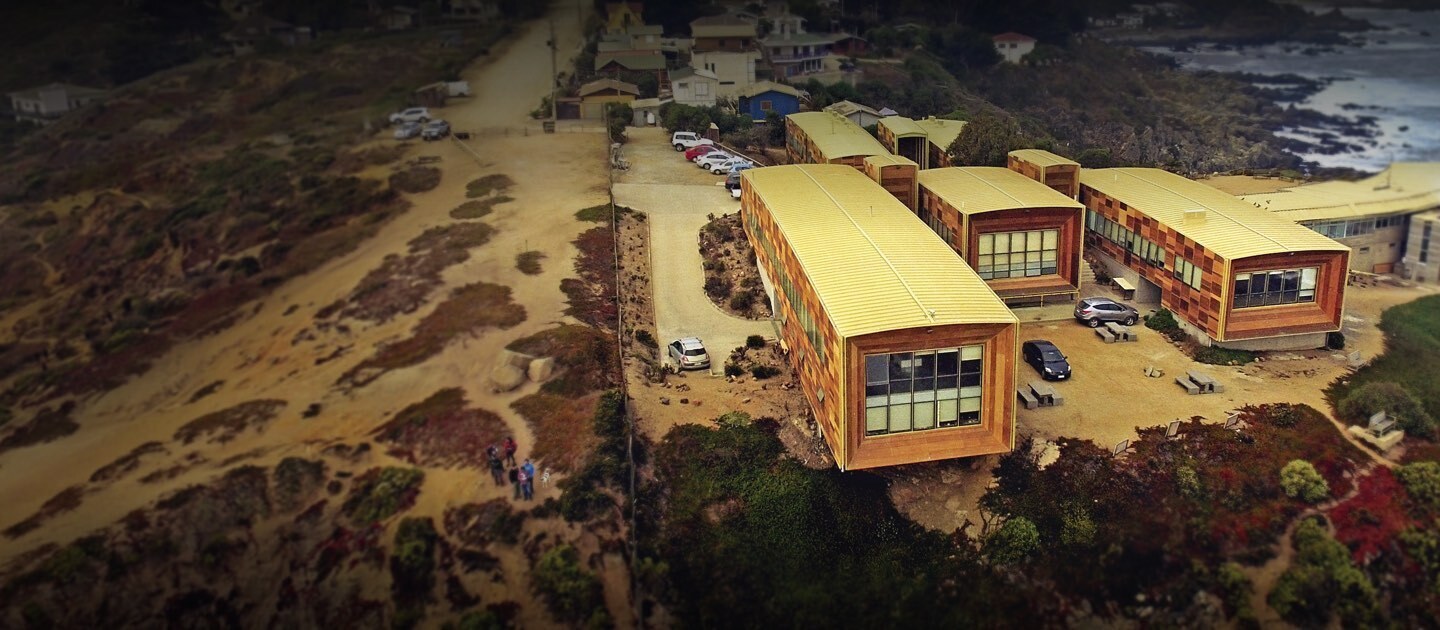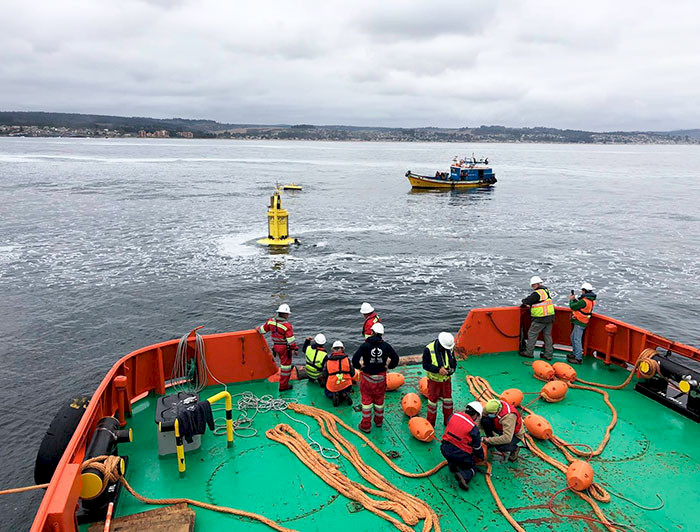
Open Sea Lab: The first step to promoting the use of renewable marine energy in Chile
A buoy, anchored two kilometers from the UC Coastal Marine Research Station in Las Cruces, will drive the country's marine renewable energy industry's development. It'll also provide relevant information on climate change, currents, and swells.

photo_camera The movement of the waves allows the marine energy converter to generate its energy. This movement feeds a series of instruments to monitor and measure San Antonio Bay's coastal sea in the Fifth Region. (Credit: Buoy installation/Open Sea Lab)
Suppose you look two kilometers offshore from the Coastal Marine Research Station (ECIM Spanish acronym) in Las Cruces, Valparaíso Region. In that case, you can make out a "little dot" that floats on the water. It is a full-scale marine energy converter recently installed on our coast. It is the first in Latin America and the fifth of its kind in the world.
Saying simply: the device is a buoy capable of generating wave energy to power a complete ocean observation and measurement system. The converter is part of the "Open Sea Lab" project. This open research platform seeks to promote interdisciplinary scientific studies and contribute to marine renewable energy development. This industry does not currently exist in Chile. The buoy will also provide relevant information on other coastal ocean areas, such as climate change, currents, and swells.
"This is a significant project for our institution. It will greatly boost interdisciplinary research in marine sciences and develop marine renewable energies in the country. Having an integrated coastal ocean observation platform is a long-standing desire of many coastal researchers in our country. It will provide real-time and free data for the scientific community," said Research Vice President Pedro Bouchon.
"This initiative is the culmination of almost four decades of scientific research. It is a milestone, and it allows us to trigger and accelerate interdisciplinary work," said ECIM director Sergio Navarrete with great satisfaction. "This part of the ocean is critical to understanding climate change. It will allow us to improve our observational capabilities greatly," he added.
Offshore Anchored Energy
The PowerBuoy® (PB3) measures 13 meters long in total - 10 meters below the sea surface - and will be anchored, floating over a depth of 35 meters. The buoy harnesses the energy produced by the movement of waves to generate power. Their motion makes the float move up and down the spar. This vertical movement drives a rotating mechanical system, which in turn moves a generator.
The energy produced is stored in onboard batteries. It is used to electrify different instruments, like an Acoustic Doppler Current Profiler. This device measures the direction of currents, waves, and the energy generated by the waves.
The PowerBuoy® also has a radar that measures currents and swells throughout San Antonio Bay.
Why is this buoy valuable to us?
According to Sergio Navarrete, "all the data will be available in real-time, through a free-to-use application. Hopefully, many colleagues can use the information and improve our current models".
The information will allow simultaneous work in the laboratory, so a course is already being designed with the University of California, Davis. Led by Cristián Escauriaza, this course will promote collaboration between engineers and marine biologists to solve real problems.
"Educating people is an essential aspect for us," added the ECIM Director.
"The Open Sea Lab is here to consolidate the interdisciplinary work led by the faculties of Engineering and Biological Sciences and carried out at Las Cruces Coastal Marine Research Station. It is also in line with the territorial research we carry out through R-CER, the UC Regional Centers and Stations Network," said the Research Vice President
The initiative is a joint effort between the public and private sectors and universities. It is also part of the Marine Energy Research and Innovation Center (MERIC), promoted by the Ministry of Energy and CORFO (Spanish acronym for the Chilean economic development agency).
The Center is led by the company Energía Marina SpA. This company belongs to Naval Energies of France and Enel Green Power Chile. It is supported by the scientific and technological participation of Pontificia Universidad Católica de Chile and Universidad Austral de Chile.


